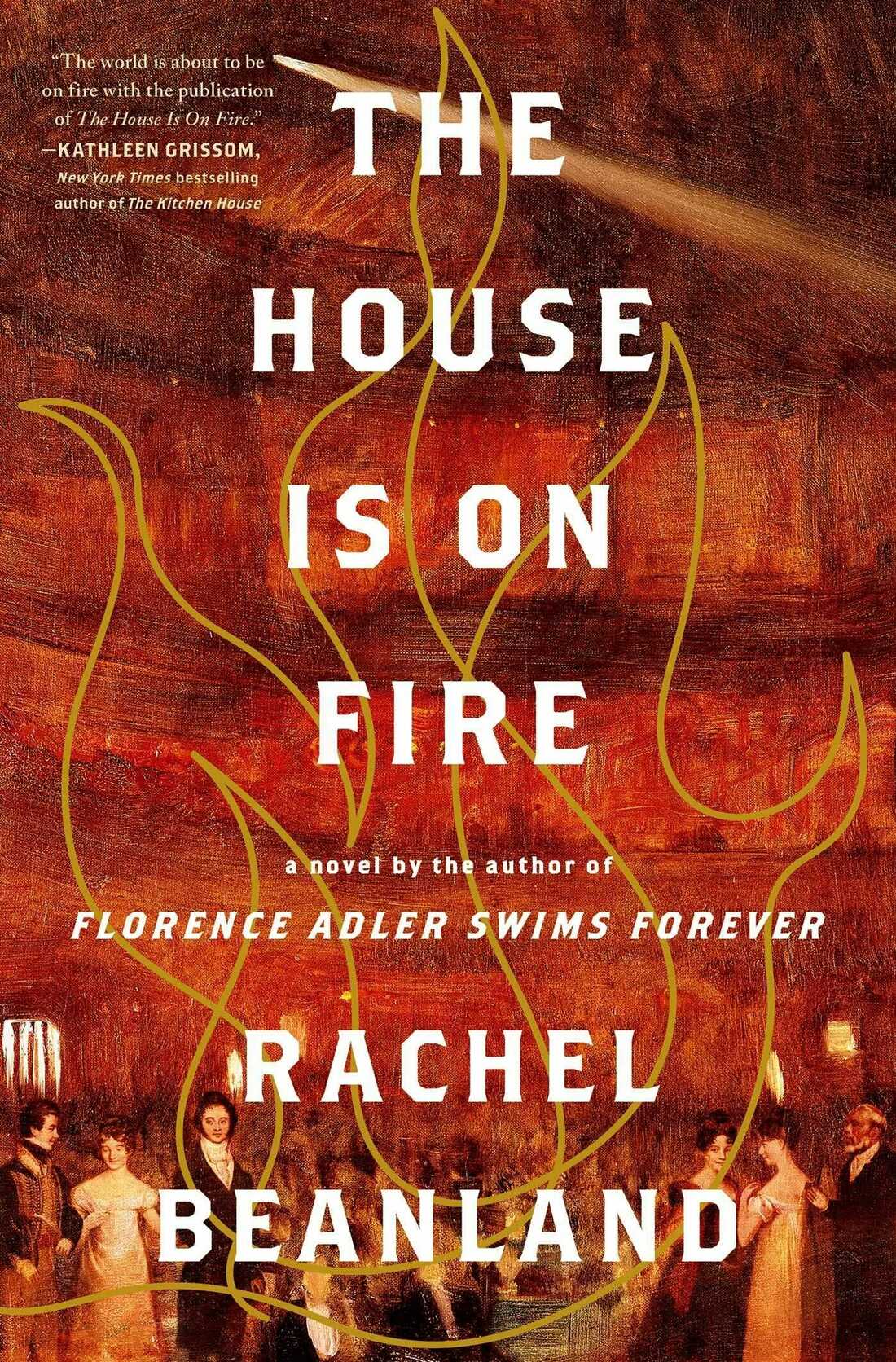‘The House Is on Fire’ spotlights privilege, sexism, and racism in the 1800s


Good historical fiction must bring to the page something that really happened while also filling in the blanks and treating character development, tension and even dialogue the same way fiction does.
Rachel Beanland’s The House Is on Fire, which chronicles the burning of a theater and its tumultuous aftermath in Virginia in 1811, checks off all those elements while also tackling the rampant racism and misogyny of the times in the process.
On the night after Christmas in 1811, the Richmond Theater in Richmond, Virginia was full of people. The Placide & Green Company, a touring ensemble with more than 30 members, was putting on a play and the town was eager to see it. The place was packed and the play in progress when a fire broke out backstage thanks to a small oversight and some malfunctioning equipment. The fire spread quickly. With more than 600 people in attendance, chaos ensued. People ran for the door, trampling others in the process, while others jumped from the third floor in a desperate attempt to safe themselves. The staircase collapsed and the theater was soon engulfed in flames. Families and friends lost track of those they were with in the mayhem and many people died. Immediately after the horrific accident, some members of the Placide & Green Company decided to hide their role in the accident and instead spread lies about rebelling slaves with torches being responsible. A hunt for those responsible — and, thankfully, for the truth — followed.
The House Is on Fire is a mosaic historical novel told from the perspectives of four different people: Sally Henry Campbell, a recently widowed woman glad to relive the good times she had with her husband and who understands how the discourse changed after the fire and why it matters to set the record straight; Cecily Patterson, a young slave who has suffered years of abuse at the hands of her owners’ son, is panicked about the possibility of being forced to go with him when he gets married, and decides to take advantage of the confusion and run away; Jack Gibson, a young stagehand who dreams of being an actor and one day working with the Placide & Green Company and who played a big role in the fire and wants the truth to come out; and Gilbert Hunt, a slave who works as a blacksmith — and becomes a hero during the fire — and is saving money in hopes of one day buying his wife’s and then, if possible, his own freedom. The catastrophe, and the days that follow, bring them together in unexpected ways.
Beanland skillfully juggles the four main alternating points of view while also increasing the narrative’s tension with each chapter. Between the lies, Sally’s anger at the injustices around her, Cecily hiding and planning her escape to Philadelphia, Jack’s constant fear and guilt, and Gilbert’s bizarre position as an abused slave but also the town’s hero after catching women who were jumping from the third floor, it’s easy to forget that the events Beanland writes about actually happened. Also, given the plethora of secondary characters and subplots, it’s incredible how much the author gets done with short chapters, lots of dialogue, and impeccable economy of language.
While much research went into this historical novel, the biggest challenge Beanland had was navigating the rampant racism and misogyny of the times, and she pulled it off with flying colors. The Black characters are as rich and complex as they deserved to be and their situation is presented in all its cruelty despite the fact that mental, physical, and sexual abuse of slaves was not uncommon at the time. Also, she delves deep into the sexism of the times, with Sally not only questioning things like why women aren’t ever in the newspaper as interviewees but also doing everything she can to bring to light the truth about the cowardice displayed by most men once the fire broke out, after an article claims the men were yelling for their children and wives but it was “the other way around”: “It’s the women who were shrieking, while the men pushed past them — and in some cases, climbed over the them — to get to the door.”
The House Is on Fire is wildly entertaining and it deals with touchy subjects very well. Sally, Cecily, Jack, and Gilbert all have unique voices and their stories are treated with equal care and attention, which speaks volumes not only about Beanland research skills but also the empathy she has for the people she writes about. This novel is a fictionalized slice of history, but in a time when so many treat teaching history as a taboo, it is also a stark reminder of how privilege, sexism, and racism have been in this country’s DNA since its inception, and that makes it necessary reading.
Gabino Iglesias is an author, book reviewer and professor living in Austin, Texas. Find him on Twitter at @Gabino_Iglesias.
For all the latest Entertainment News Click Here
For the latest news and updates, follow us on Google News.
